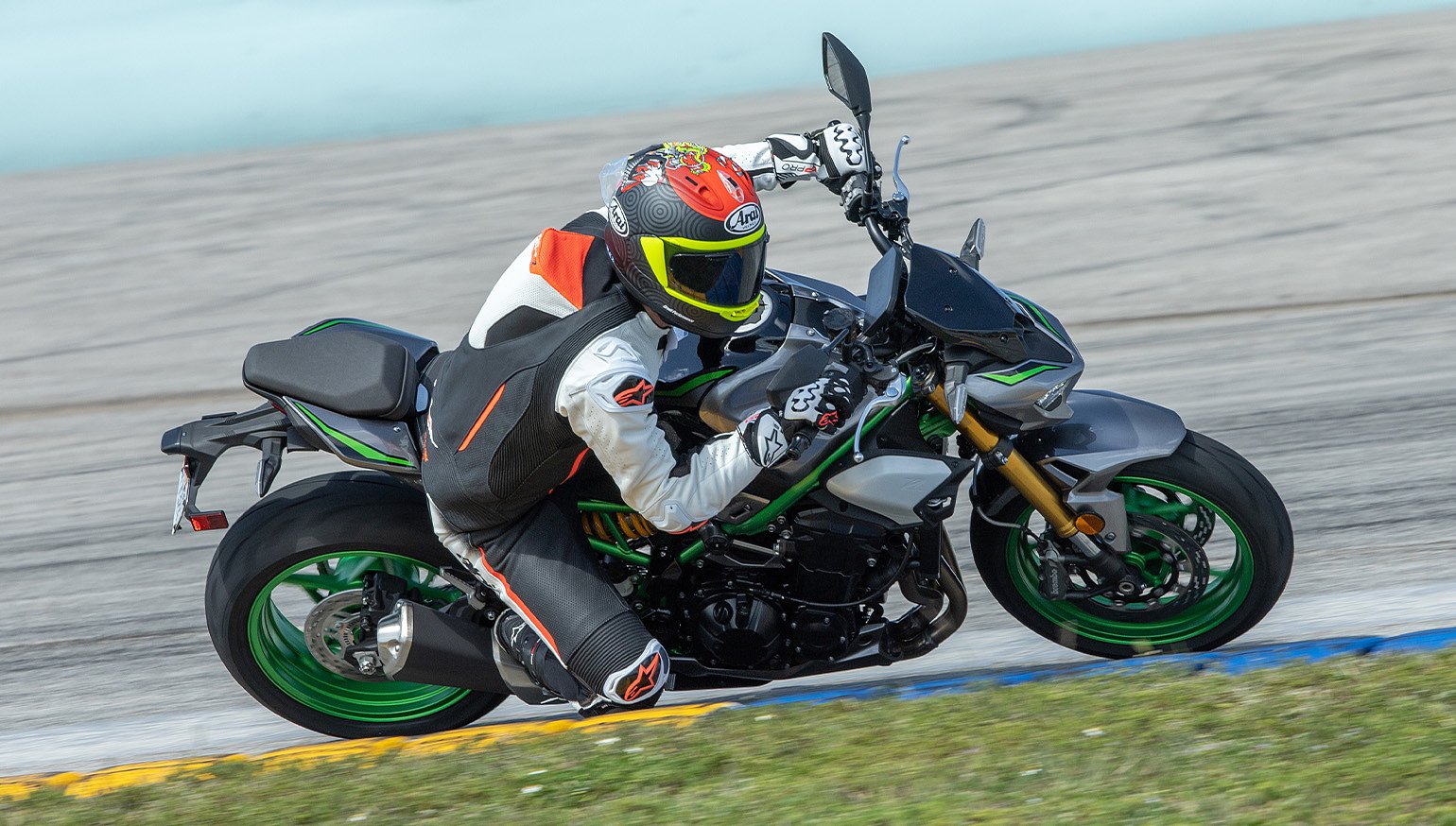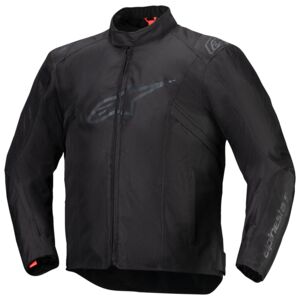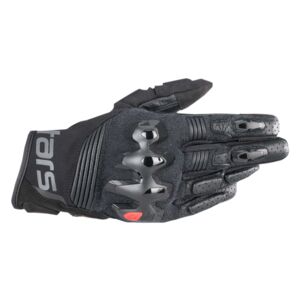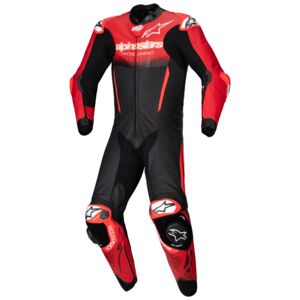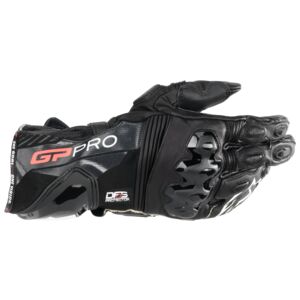How new does something have to be to be considered new?
That’s the question I weighed during the presentation for Kawasaki’s 2025 Z900 SE.
Slide after slide projected onto a conference room wall at Miami’s W South Beach hotel, all trumpeting the Z900’s newfound freshness. There was no mistaking it. That’s because a "NEW" label — in all-caps and bold red typeface — preceded each upgrade and added feature.
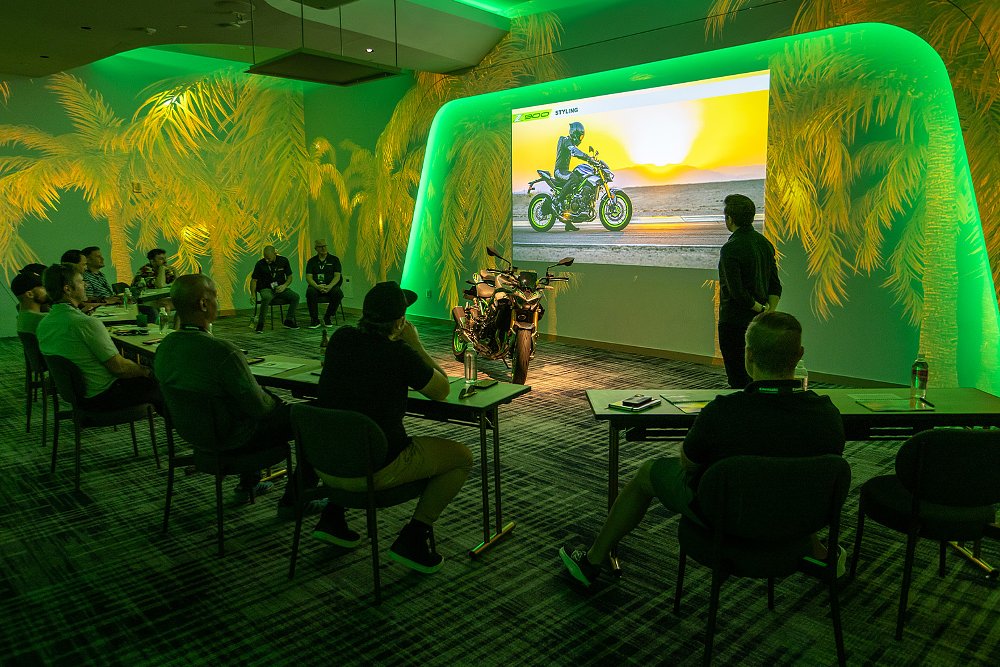
I didn’t bat an eye for the “NEW Kawasaki Quick Shifter (KQS)” or the “NEW IMU-equipped electronic” aids. That all changed when Kawi started touting the seat’s “aluminum ornament” and “internal-cut type” key. That’s when I questioned whether the Z900 SE was truly transformed. But finding answers to such questions requires a deeper look.
Baggage claim
I don’t mean to sound so skeptical. My experience with the previous-gen Z900 SE might have something to do with that. It was a bike that both delighted and dismayed me. The handling was effortless, but the engine was characterless. The TFT was slick, but its interface was clunky. The seat slunk low, but the legroom was cramped. In all, the SE amounted to a mixed bag. That’s the lens through which I saw its successor.
Save for the restyled bodywork and a handsome new headlight, much of the previous package remains (that’s how it looks to the naked eye, at least). The 948 cc inline four still acts as a stressed member of the tubular steel frame. The Öhlins S46 shock, gold-colored KYB fork, and Brembo M4.32 calipers reprise their roles as up-spec upgrades. All the main players return in 2025. But it’s behind the scenes where many of the changes occur.
Take the four-pot mill, for example. It maintains a 73.4 mm bore, 54 mm stroke, and 11.8:1 compression ratio. Even peak torque remains the same, at 73.1 foot-pounds (at 7,700 rpm). Only the claimed horsepower falls slightly, from 125 horsepower to 123 (at 9,500 rpm). As you can see, most of Kawasaki’s updates don’t show up on the spec sheet. That doesn’t mean they make no impact.
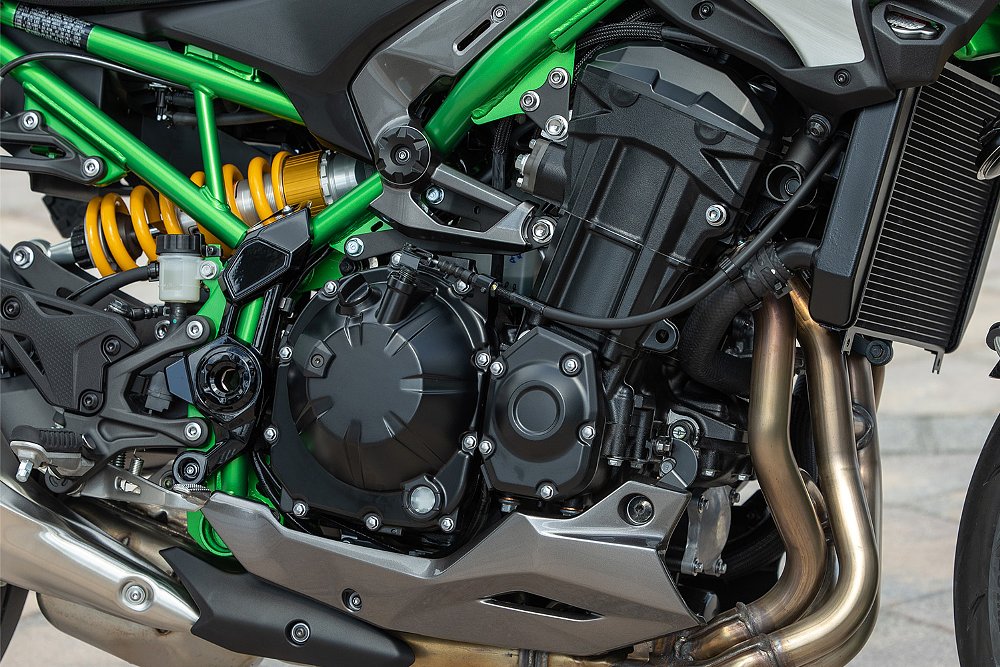
Team Green alters the cam profile for improved low-rpm torque while revised ECU settings prioritize linear power and fuel efficiency. What Kawi calls electronic throttle valves (Kawasaki-speak for ride-by-wire) finally bestows a bidirectional quickshifter and cruise control upon the platform. Similar care goes into the surrounding components.
A gusset welded behind the head pipe changes the trellis frame’s rigidity. Flatter subframe rails leave room for thicker seat padding (without raising the 31.9-inch seat height). The electronics take the incremental route, too. There’s now an IMU, but it only governs cornering ABS. The five-inch TFT dash is larger, but only by 0.7 inches.
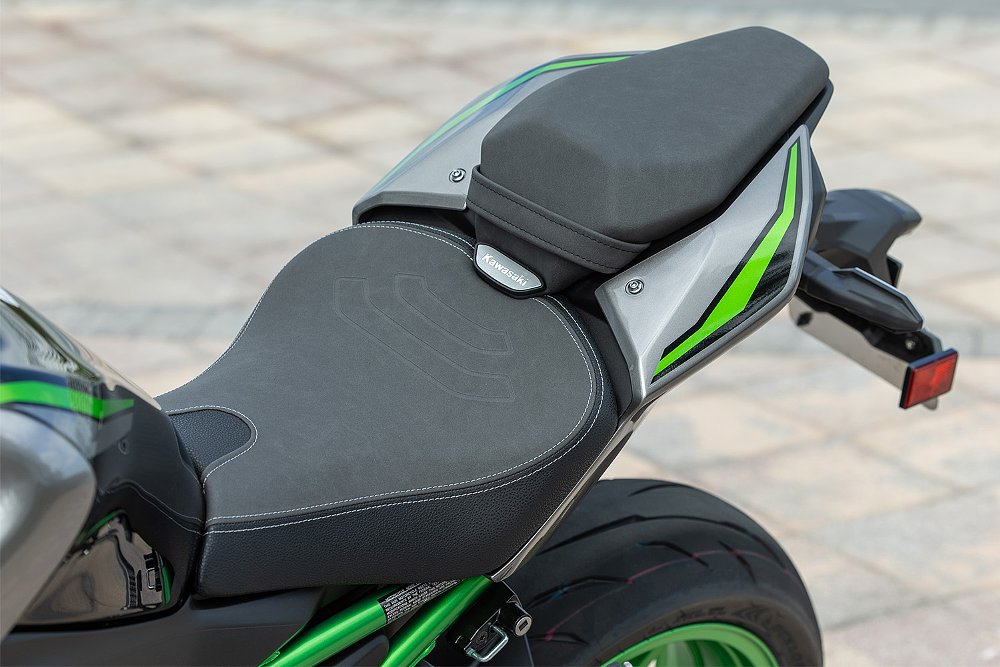
Individually, each change is little more than a minor tweak. Together, they add up to a substantial change. At least that’s what Kawasaki wants everyone to believe. That’s why getting the retooled roadster onto Miami’s mean streets was more pressing than ever. It was the only way to find out just how "new" the 2025 Z900 SE really is.
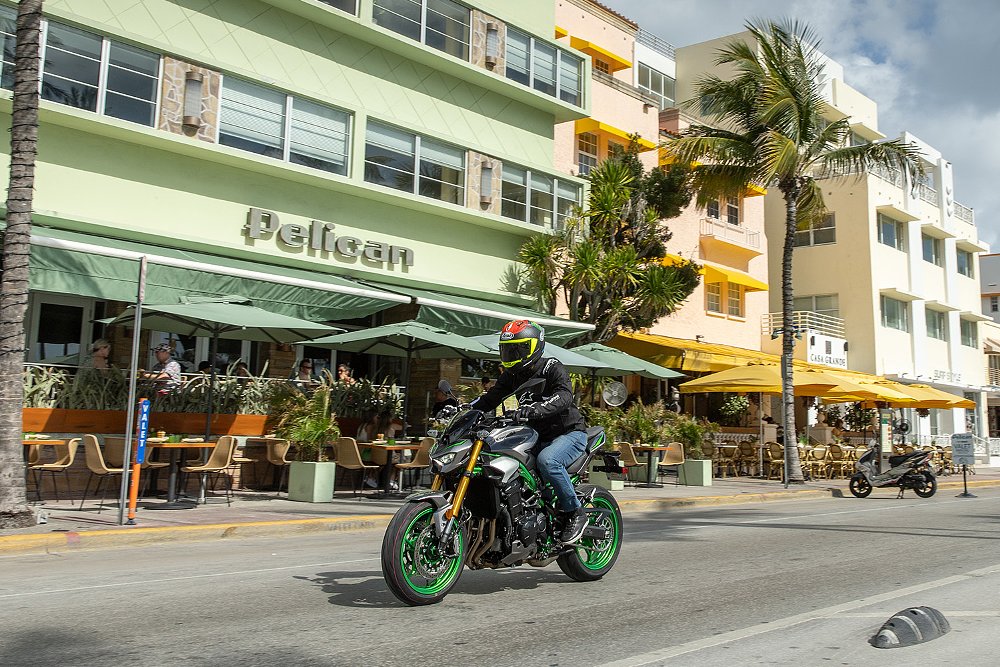
Welcome to Miami
Miami is known for its warm weather and colorful culture. It’s known as a travel destination, not as a motorcycling destination. I’ll be blunt, the riding in and around The Magic City is flat, in more ways than one. Our route was every bit as boring as the Rever map below suggests. Low speeds, abundant stoplights, and the occasional corner make for a joy-less ride.
Fully judging a bike’s engine and chassis in such settings is practically impossible. To simulate the Z900’s ideal habitat, Kawasaki rented the Homestead-Miami Speedway, a circuit that hosts NASCAR and IndyCar events. Getting there forced our group to traverse the 40 miles of Dade County streets between South Beach and Homestead, Florida. For much of that time, I turned my attention to the Z900’s new tech.
The dated UI that underpinned the outgoing Z previously drew the ire of this reviewer. My complaints primarily centered on the system’s switches, which Kawasaki split between the left grip and the 4.3-inch TFT module. What it lacked in logic, it sure didn’t make up for in usability. Kawasaki addressed that shortcoming with the latest Z900. Well, for the most part it did.
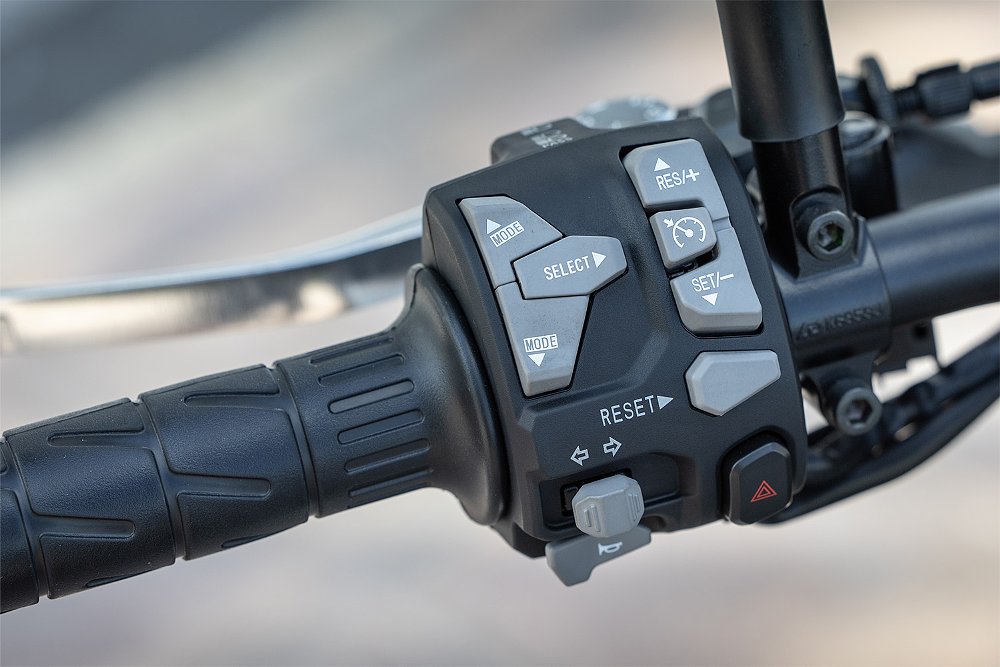
The model’s buttons are now centralized at the left switchgear. That simplifies UI navigation both at a stop and in motion. At the same time, I wouldn’t venture to describe the controls as intuitive. The rocker-style Mode switches are a primary example.
I assumed tapping the top Mode button would swap through the ride modes (Road, Sport, Rain, and Rider). Instead, it switched the lower left readout on the dash. Pressing the lower Mode button only cycled the lower right readout and punching the Select and Reset switches didn’t do the trick, either. Only after combing through the settings menus, only after exhausting all my options, did I discover that long-pressing the Mode buttons actually adjusts the ride mode. Silly me.
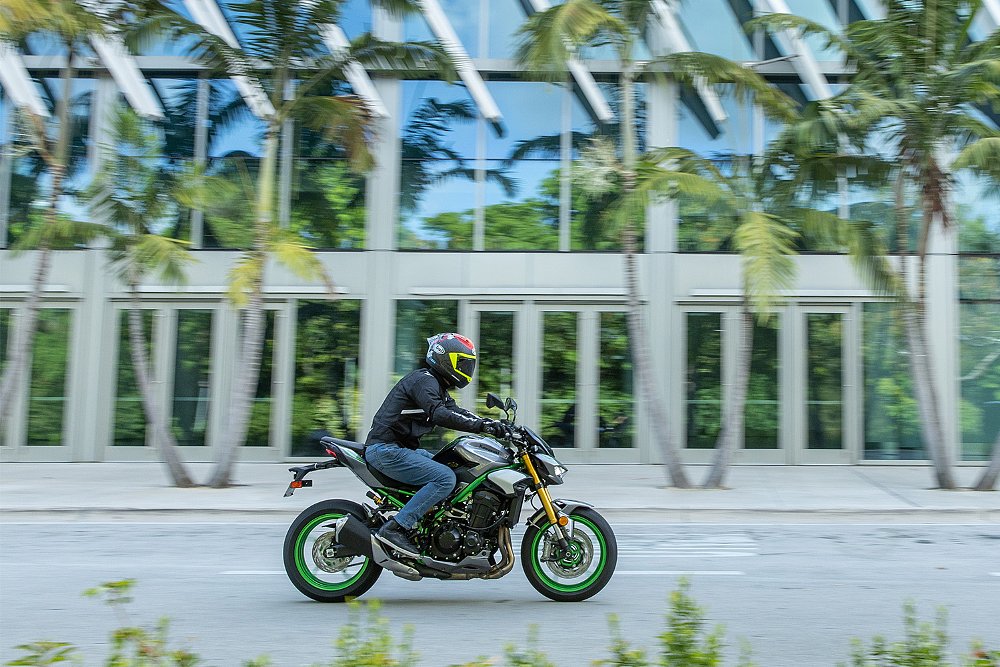
While frustrating to first-time users like myself, those putting a Z900 in their garage will adapt to the wonky button functions in little time. What repetition and muscle memory can’t overcome, though, is the model’s mode-switching procedure. Kawasaki proudly announced the Z900’s ability to change ride modes on the go, but to do so, users must roll off the throttle and hold down the mode button for three seconds. That effectively turns the Z900 and its rider into sitting ducks. It’s a good thing the 948 cc inline-four engine remains surprisingly responsive, no matter the ride mode.

The engine’s flexibility is one of its greatest strengths. That was abundantly clear in midday Miami traffic. Not once did the Z lug, jitter, or stumble, even when carrying speeds as low as 29 mph in sixth gear. Throttle pick-up and roll-off are slightly snatchy, but it’s never jarring. If only I could say the same for the new quickshifter.
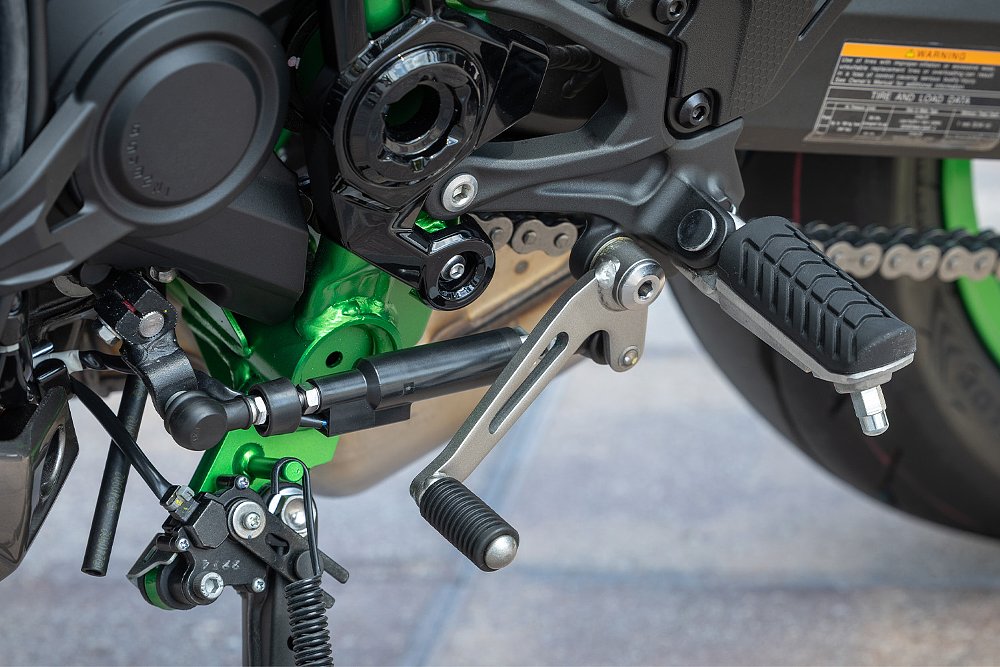
While it’s a welcome addition to Kawi’s middleweight naked, the bidirectional unit could benefit from a refinement pass. Upshifts are best performed in the midrange and under acceleration. They may be available as low as 1,500 rpm, but grabbing a gear in the lower rev range often yields notchy shifts. Even more problems presented themselves when hustling the Z900 SE around the Homestead-Miami course.
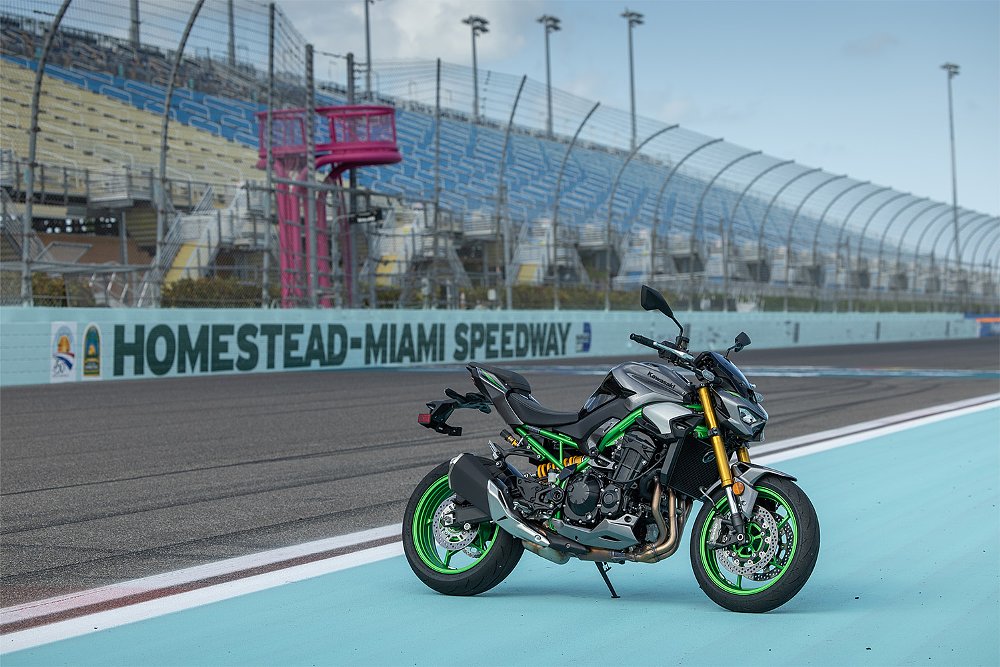
Miami heat
Take the two banked straights of the Homestead-Miami oval, toss in some high-speed 90-degree corners, two chicanes, a double-apex sweeper, one second-gear hairpin, and two infield straights, and you have yourself a motorcycle track. Converted from a NASCAR circuit, the infield course isn’t going to make any top-10 lists, but its unique combination of corners and straights certainly put the 948 cc four-banger on full display.
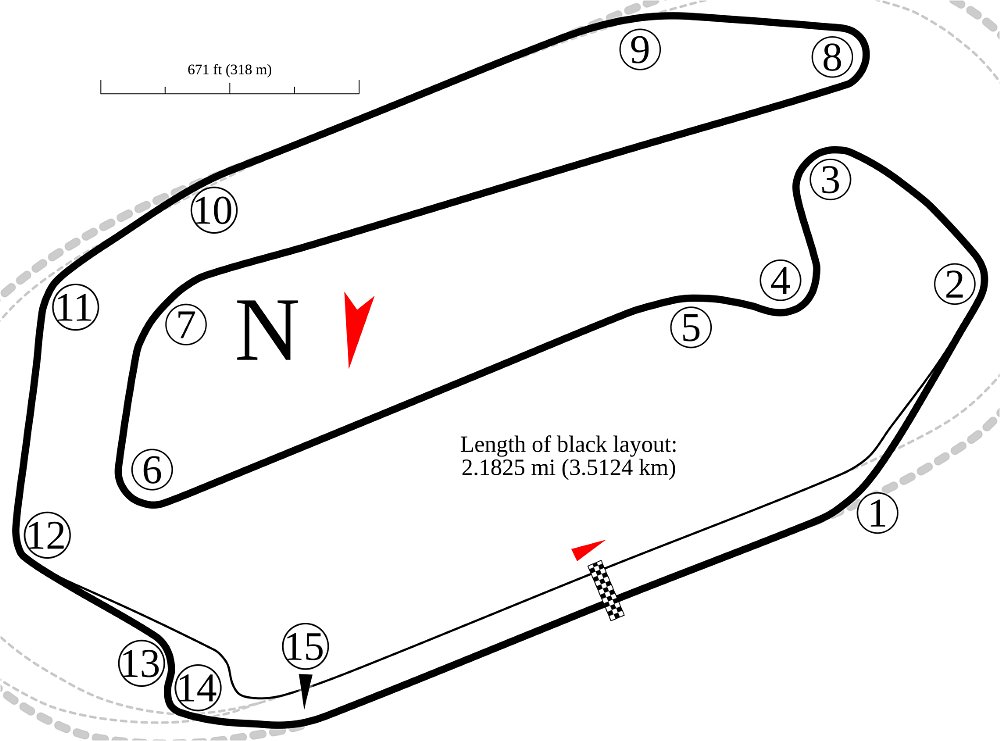
Turns three and four called for throttle finesse while turns eight and 15 required hard acceleration. The Z excelled in both situations. While the four-pot powerplant truly feasts in the mid-range, it still eats at lower rpm. Turn six illustrated that point best. In an attempt to keep the 900 in its meaty mid-range, I often downshifted to second gear upon corner approach. That’s until I discovered that leaving the gearbox in third allowed the engine’s low-down torque to pull me out of the corner exit. That only paid dividends when upshifting past turn seven and onto the long straight, where I saved myself an extra upshift and what felt like a few tenths of a second.
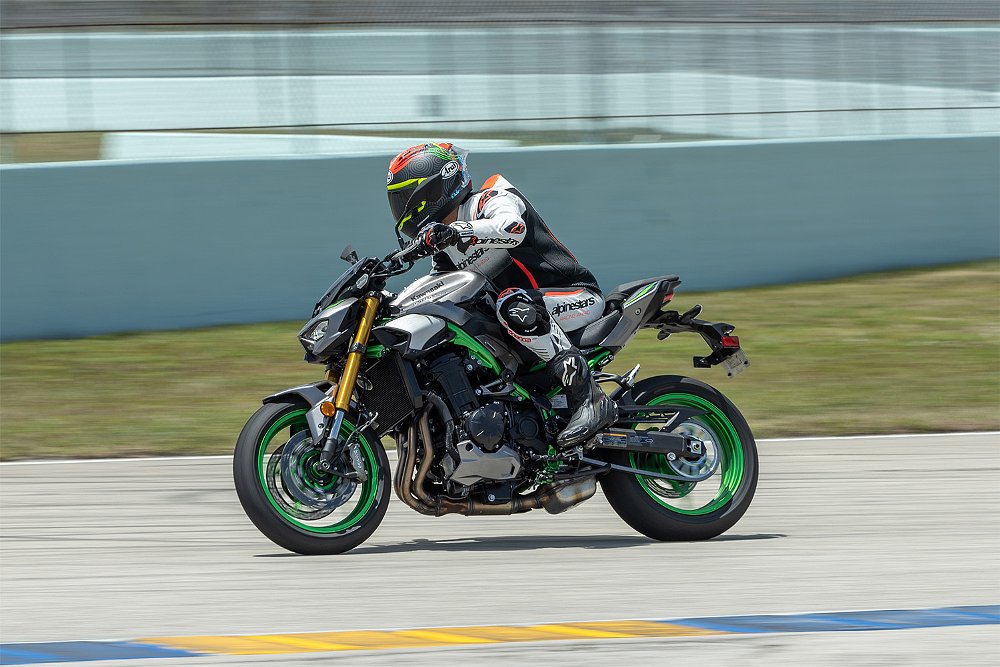
Kawasaki reps were also quick to hail the engine’s “over-rev characteristic.” It’s a difficult claim to refute after pinning the Z900’s throttle. Nowhere was it more evident than the home, back, and infield straights. All four force the rider to climb up the gearbox, inviting the engine to belt out its four-cylinder arpeggio. Unfortunately, that’s also where the quickshifter’s limitations come to bear.
For instance, I frequently exited turn eight in second gear. I’d quickly upshift while climbing the banking before kicking into fourth. That’s where the problems arose. With the tach bar flirting with the 11,000-rpm redline, the transmission regularly missed the next gear. Lap after lap, accelerating onto the back straight produced the same results.
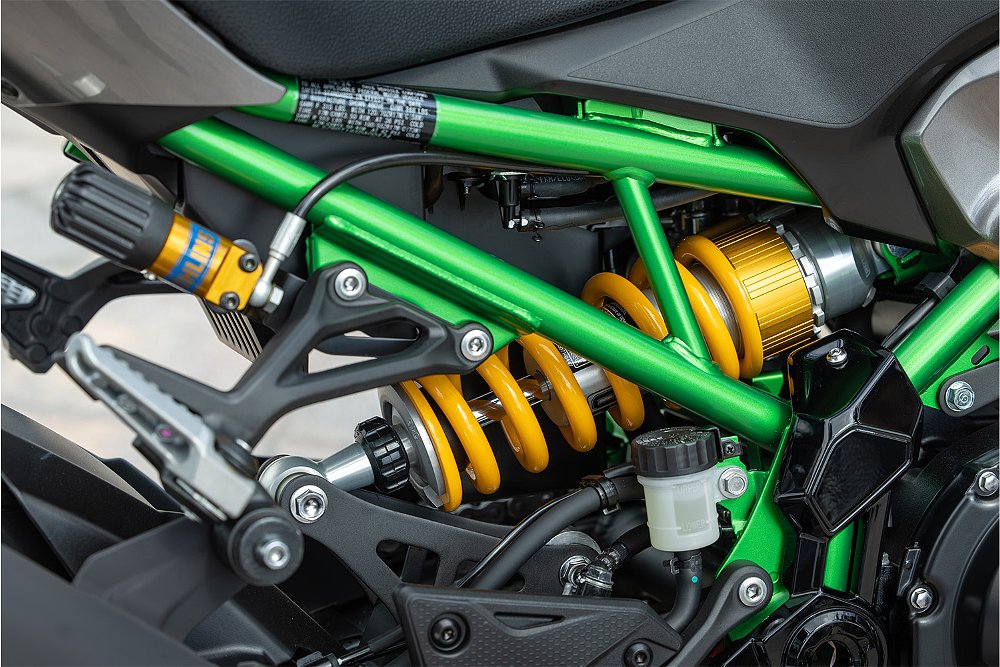
Only short-shifting from third to fourth and from fourth to fifth remedied the situation. I’ll say this much, I’m relieved that the Z900 finally earned a quickshifter. It was a long time coming. On the other hand, Kawasaki has room for improvement with future iterations.
The same can’t be said about the Z900’s handling. If there’s one department in which the SE needs no updating, it’s its chassis. Riding the Z on the track only reinforced that point. The pavement conditions of the Homestead-Miami infield track are far from ideal. The bumps at the high-speed entry of turns one and 11 say as much. If that’s not convincing enough, see the concrete patches positioned at each corner apex.
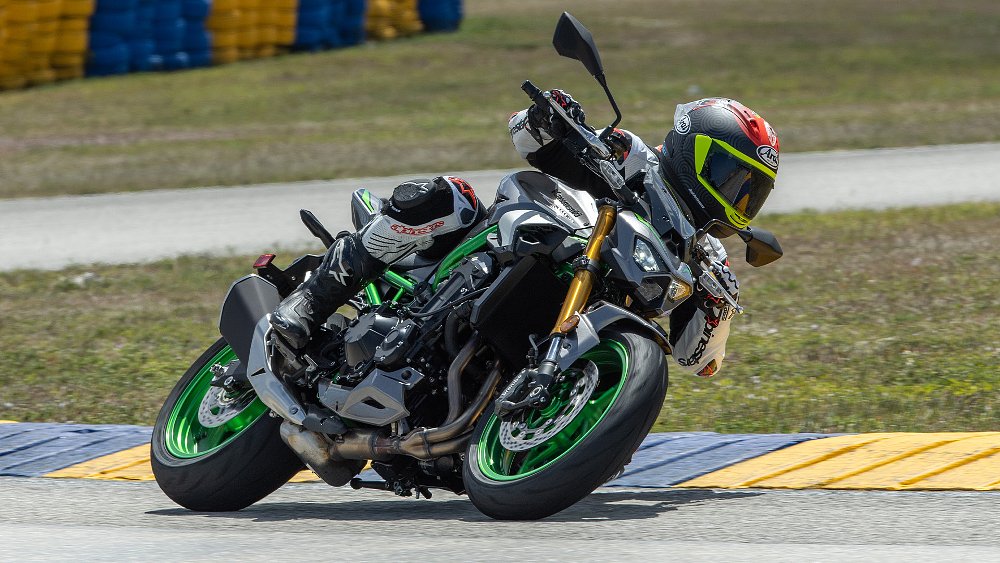
To put it lightly, it’s a traction minefield out there. Good thing the KYB fork and Öhlins shock are so communicative. I could feel the tire grip decrease every time the Dunlop Sportmax Q5As rolled over a concrete strip. Even when plowing through a series of bumps at full lean, the chassis remained composed. The only time I truly tested that composure was at corner exit.
The Z900’s new five-axis IMU measures surge (forward/backward), heave (up/down), sway (left/right), pitch (transverse axis), and roll (longitudinal axis), but the system’s algorithm estimates yaw (normal axis). While the unit drives cornering ABS, it does nothing for traction control, which still draws information from the wheel sensors. That’s not a bad thing, per se.
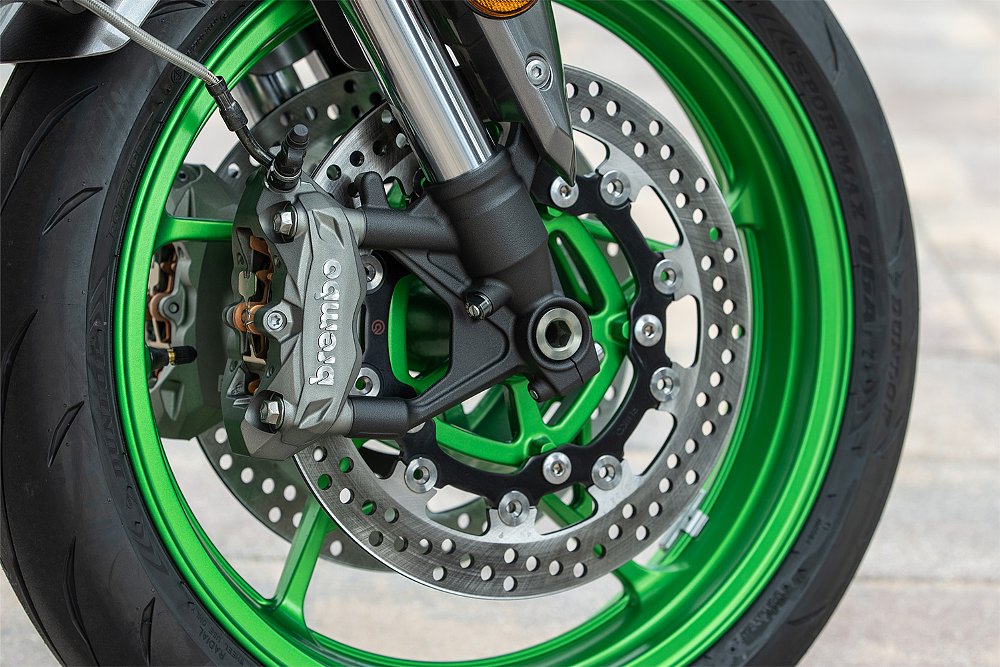
On several occasions, my impatience and sloppy throttle application kicked out the rear at the turn-15 exit. In one instance, TC saved my longest slide of the day (one that could have very well turned into a highside). That’s where the rider aid shined. Not once was its intervention abrupt or jolting. It simply, and smoothly, reduced power until grip returned. When it comes down to it, the Z didn’t need IMU-informed traction control. Kawasaki was much more selective when it came to that upgrade. That’s what ultimately defines the new model.
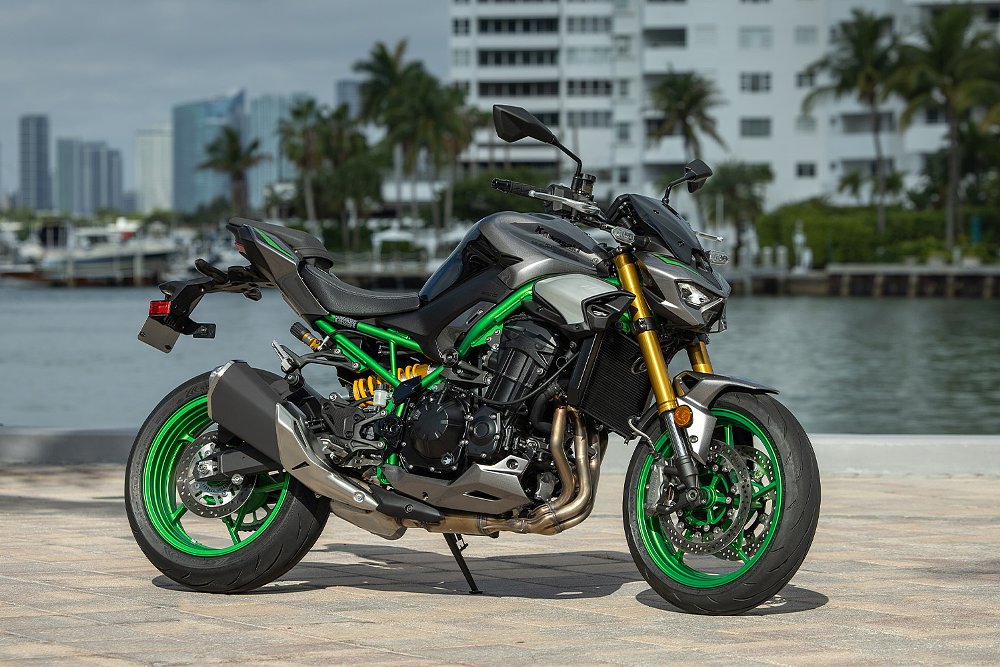
Newer than the sum of its changes
Kawasaki was quick to quantify its Z900 updates. By my count, the brand’s presentation identified 60 new features added to the model in 2025. But, it’s not how many changes Team Green made, it’s that it made the right changes. The engine is more versatile than ever. A quickshifter and cruise control finally arrive. Its tech is no longer dated. Lest we forget the new styling.

That doesn’t mean the Z900 is perfect. Far from it, actually. The exhaust still butts up against the rider’s right heel, the seat-to-footpeg distance remains short, and the new switchgear lacks intuitive design. Still, that shouldn’t detract from the fact that Kawasaki addressed many of the model’s weaknesses in 2025. That’s what makes the new Z900 actually feel new to me.
| 2025 Kawasaki Z900 SE | |
|---|---|
| Price (MSRP) | $11,849 (SE); $9,999 (base model) |
| Engine | 948 cc, liquid-cooled, 16-valve, inline four |
|
Transmission, final drive |
Six-speed, chain |
| Claimed horsepower | 123 @ 9,500 rpm |
| Claimed torque | 73.1 foot-pounds @ 7,700 rpm |
| Frame | Trellis frame with twin-tube rear section |
| Front suspension | KYB 41 mm fork, adjustable for spring preload, compression, and rebound damping; 4.7 inches of travel |
| Rear suspension | Öhlins S46 shock, adjustable for spring preload and rebound damping; 5.5 inches of travel |
| Front brake | Brembo M4.32 four-piston calipers, 300 mm discs with ABS |
| Rear brake | Nissin single-piston caliper, 250 mm with ABS |
| Rake, trail | 24.7 degrees, 4.3 inches |
| Wheelbase | 57.1 inches |
| Seat height | 31.9 inches |
| Fuel capacity | 4.5 gallons |
| Tires | Dunlop Sportmax Q5A; 120/70R17 front, 180/55R17 rear |
| Claimed weight | 472 pounds |
| Available | Now |
| Warranty | 12 months |
| More info | kawasaki.com |




